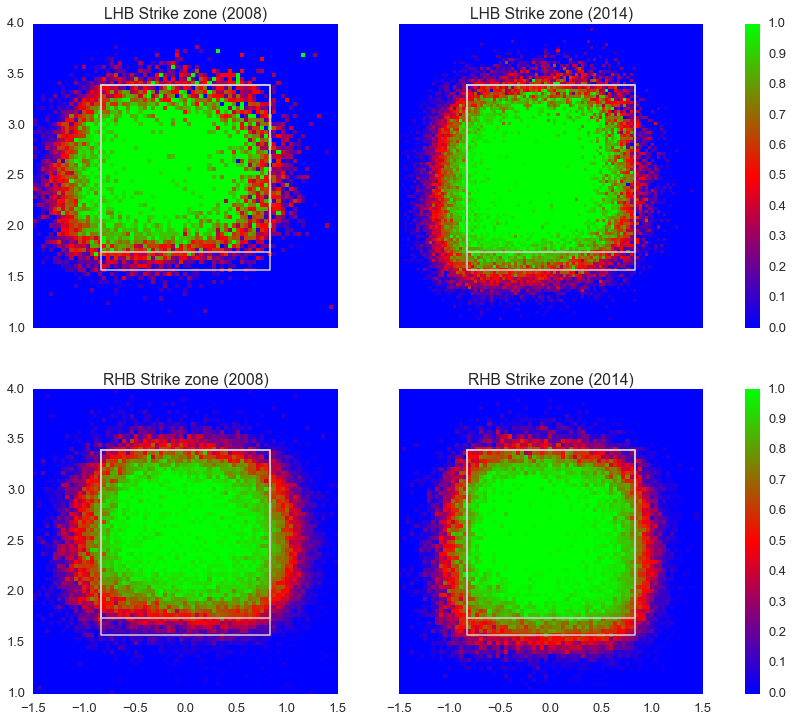Obviously, everyone knows about ground ball pitchers. I'm wondering, though, if the recent signings suggest that the Red Sox are trying to gain value by targeting below-top tier pitchers with a specific ground ball defense strategy.
I wondered this when, looking at the last three starting pitching acquisitions, I noted that they all have above average GB%s.
[tablegrid= Rick Porcello ]Season Team [SIZE=14.3999996185303px][/SIZE]GB/FB [SIZE=14.3999996185303px] [/SIZE][SIZE=14.3999996185303px][/SIZE]LD% [SIZE=14.3999996185303px] [/SIZE][SIZE=14.3999996185303px][/SIZE]GB% [SIZE=14.3999996185303px] [/SIZE][SIZE=14.3999996185303px][/SIZE]FB% [SIZE=14.3999996185303px] [/SIZE][SIZE=14.3999996185303px][/SIZE]IFFB% [SIZE=14.3999996185303px] [/SIZE] 2009 Tigers 1.89 17.1% 54.2% 28.7% 4.9% 2010 Tigers 1.57 17.6% 50.3% 32.1% 7.7% 2011 Tigers 1.73 19.0% 51.4% 29.6% 10.5% 2012 Tigers 2.36 24.2% 53.2% 22.6% 15.8% 2013 Tigers 2.34 21.1% 55.3% 23.7% 5.5% 2014 Tigers 1.69 22.0% 49.0% 29.0% 10.5% Total - - - 1.89 20.2% 52.1% 27.6% 9.2%
[tablegrid= Wade Miley ][SIZE=14.3999996185303px][/SIZE]Season [SIZE=14.3999996185303px] [/SIZE]Team[SIZE=14.3999996185303px] [/SIZE][SIZE=14.3999996185303px][/SIZE]GB/FB [SIZE=14.3999996185303px] [/SIZE][SIZE=14.3999996185303px][/SIZE]LD% [SIZE=14.3999996185303px] [/SIZE][SIZE=14.3999996185303px][/SIZE]GB% [SIZE=14.3999996185303px] [/SIZE][SIZE=14.3999996185303px][/SIZE]FB% [SIZE=14.3999996185303px] [/SIZE][SIZE=14.3999996185303px][/SIZE]IFFB% [SIZE=14.3999996185303px] [/SIZE] 2011 Diamondbacks 1.54 23.8% 46.2% 30.0% 2.6% 2012 Diamondbacks 1.28 23.0% 43.3% 33.7% 6.4% 2013 Diamondbacks 1.91 20.7% 52.0% 27.2% 4.8% 2014 Diamondbacks 1.82 20.9% 51.1% 28.0% 3.6% Total - - - 1.64 21.7% 48.6% 29.7% 4.9%
[tablegrid= Justin Masterson ][SIZE=14.3999996185303px][/SIZE]Season [SIZE=14.3999996185303px] [/SIZE]Team[SIZE=14.3999996185303px] [/SIZE][SIZE=14.3999996185303px][/SIZE]GB/FB [SIZE=14.3999996185303px] [/SIZE][SIZE=14.3999996185303px][/SIZE]LD% [SIZE=14.3999996185303px] [/SIZE][SIZE=14.3999996185303px][/SIZE]GB% [SIZE=14.3999996185303px] [/SIZE][SIZE=14.3999996185303px][/SIZE]FB% [SIZE=14.3999996185303px] [/SIZE][SIZE=14.3999996185303px][/SIZE]IFFB% [SIZE=14.3999996185303px] [/SIZE] 2008 Red Sox 1.99 18.4% 54.3% 27.3% 0.0% 2009 2 Teams 1.7 15.0% 53.6% 31.4% 7.8% 2010 Indians 2.41 15.3% 59.9% 24.9% 5.0% 2011 Indians 2.06 18.2% 55.1% 26.7% 9.1% 2012 Indians 2.23 19.3% 55.7% 25.0% 7.0% 2013 Indians 2.4 17.8% 58.0% 24.2% 9.1% 2014 2 Teams 2.7 20.3% 58.2% 21.6% 12.2% Total - - - 2.2 17.8% 56.6% 25.7% 7.5%
League averages, per FanGraphs:
[tablegrid= Batted Ball %s ]Type League Average LD 21% GB 44% FB 35% IFFB 11%
That got me thinking about the excellent article posted by E5 Yaz that got so much attention about how Pittsburg turned things around by intentionally implementing a ground ball strategy with advanced defensive positioning analysis and ground ball pitch inducing pitch selection strategies for the pitchers.
We know Farrell is an excellent pitching coach. We know the Red Sox have been thinking about the importance of defense for some time. And we know the Red Sox are one of the teams aggressively pursuing advanced analytics to figure stuff like this out and that Butterfield goes through specific infield defensive positioning with the players.
In chatting about this as a possible strategy for the Red Sox with esteemed member WarDuke, he promptly found these little tidbits posted on WEEI yesterday from Ben Cherington:
What do we think? Is this just coincidental pick-ups or part of a strategic vision to pick-up SP that has more relative value to the Red Sox than the market price due to their use of game calling strategy and analytics? Thoughts?
I wondered this when, looking at the last three starting pitching acquisitions, I noted that they all have above average GB%s.
[tablegrid= Rick Porcello ]
[tablegrid= Wade Miley ]
[tablegrid= Justin Masterson ]
League averages, per FanGraphs:
[tablegrid= Batted Ball %s ]
That got me thinking about the excellent article posted by E5 Yaz that got so much attention about how Pittsburg turned things around by intentionally implementing a ground ball strategy with advanced defensive positioning analysis and ground ball pitch inducing pitch selection strategies for the pitchers.
We know Farrell is an excellent pitching coach. We know the Red Sox have been thinking about the importance of defense for some time. And we know the Red Sox are one of the teams aggressively pursuing advanced analytics to figure stuff like this out and that Butterfield goes through specific infield defensive positioning with the players.
In chatting about this as a possible strategy for the Red Sox with esteemed member WarDuke, he promptly found these little tidbits posted on WEEI yesterday from Ben Cherington:
On how he views the infield defense with ground ball pitchers: “We feel good about the way our infield defense has gone. Obviously the right side has and should continue to be a strength. For right-hand pitchers that keep the ball on the ground, really the right side of the infield is the most important ‘€” not the only important part but the most important. Sandoval has been a good defender and we should see probably improvement at that position defensively. As we saw, Bogie is still developing as a shortstop in the major leagues. But the way he looked after he moved back to the position late in the season and what he did late in the year and even what we’ve seen in this offseason from him, we feel confident he’s going to be a solid defender there.”
On his analysis of Porcello: “Well, I think ground balls, and he doesn’t walk guys. He’s been extremely durable. He made an adjustment last year in his style which we think helped him. Certainly the type of guy who would benefit from a good defense. He’s a guy who was a very high pick, got to the big leagues very quickly and was kind of learning how to pitch at the big league level for a while. Seems like he was starting to turn a corner the last couple of years. Even 2013, we feel like look at the underlying numbers and our scouting reports, it was sort of better than what the raw ERA looked like. That carried into 2014. We think he’€™s at a good point in his career and that he’ll be a good, solid addition to the rotation.”
What do we think? Is this just coincidental pick-ups or part of a strategic vision to pick-up SP that has more relative value to the Red Sox than the market price due to their use of game calling strategy and analytics? Thoughts?





